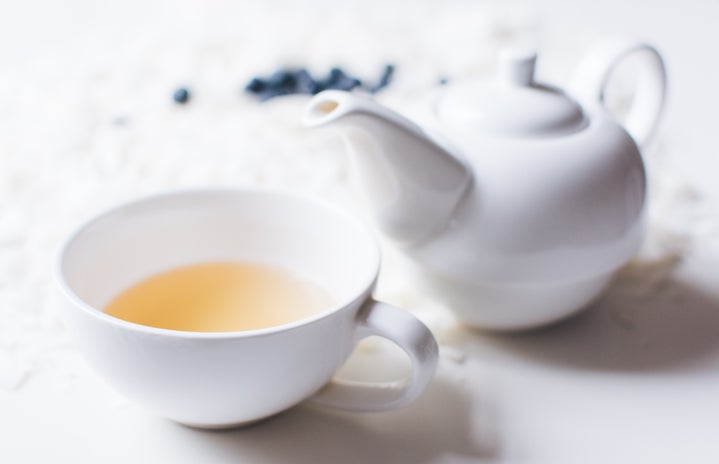Tea has been around for hundreds of years, from the hands of Chinese emperors to British monarch’s tables, to your grandma’s cupboard. It is simple yet complex. There isn’t much to tea, but it’s easy to get it wrong. Here is what you need to know when you’re just now venturing into the world of tea.
For starters, most tea comes from one plant: Camellia Sinensis. Flavors vary depending on where the tea is harvested, whether from China, India, Africa, or other places. The kind of tea depends on when it’s been harvested and how it’s been processed—whether it’s been oxidized or not.
Black Tea
Black tea is arguably the most common form of tea. It is harvested when the tea tree is ripe, and the leaves are fully processed and oxidized. This is what gives it its color and high caffeine content. Fun fact, in East Asia, China especially, black tea is actually called red tea.
To brew the perfect cup, use boiling water and let the tea steep for 2-3 minutes. I usually go by color, so I leave it until it reaches a warm orange-red color, which is a light cup. Be careful not to over-steep your tea; otherwise, it will become bitter.
It is very common to add milk and cream to black tea, especially with stronger and maltier blends like Irish Breakfast. This gives way to classics like the London Fog—Earl Gray tea with steamed milk—and its lesser-known counterpart, the Dublin Fog—Irish Breakfast tea with milk and foam.
Oolong
This tea is most popular in South China, and it is very similar to black tea. It has a rich color and is highly processed and oxidized. While it brews a smooth cup, oolong has earthy notes, making it rich and slightly malty.
To brew this tea, the water has to be less than boiling, between 180º and 190ºF, and it should be steeped no more than three minutes.
Green Tea
This tea has a wide range of flavors and textures, depending on the origin of the tea and how it’s been processed. Most green teas are from Japan, the most popular being sencha and matcha tea. Nowadays, matcha is a popular latte, balancing the grassiness of the tea with the creaminess of the milk. It sometimes comes with jasmine, making a flowery and sweet cup of tea.
Green tea is very nitpicky: use water that’s slightly too hot, and it’ll lose its antioxidants; steep it for too long, and it will get bitter. So to brew a great cup of green tea, use water that is 160ºF and steep for no more than two minutes.
White Tea
Considered to be the most delicate tea, white tea uses leaves harvested before the flowers have bloomed. It gets its name from the tiny white hairs that cover the flower buds, and it brews a golden and sweet cup of tea. It is sometimes combined with green tea and flowers like peony and jasmine for a sweeter taste.
Using water between 170º and 180ºF, steep your tea for 1-3 minutes.
Herbal Tea
Is there anything more versatile than herbal tea? Because it does not have tea leaves from Camellia Sinensis, it is caffeine free, and the different herbs allow for different medicinal benefits. It is so easy to experiment with herbal tea. If you like fruity drinks, start with fruit infusions. If you like flowery drinks, there are different blends that combine all kinds of flowers. Anything you like, herbal tea can do.
Much like black tea, it uses boiling water to brew, but it can be steeped however long you like. The more it steeps, the stronger the tea.
Some websites will tell you that teas can be re-steeped only once or only three times. However, I disagree. Re-steeping tea is like drinking different kinds of tea; the flavor notes change subtly between steeps, and you taste different things each time. I personally prefer the second steep of black teas, even though it is recommended to only steep once. Tea is personal, so the “rules” can be bent to fit your tastes, whether it be steeping your black tea for six minutes or steeping your herbal tea for two.
Make each cup of tea your own, and don’t be afraid to try new things.


